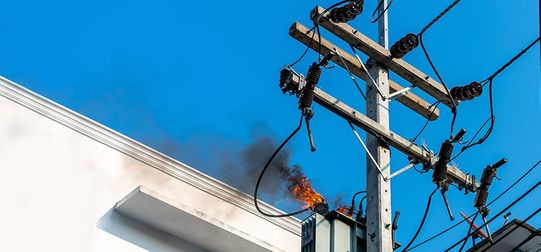There will be outages, but you can avoid the consequences
Eaton’s 2018 Blackout Tracker has been released and presents some interesting insights into the stability of our power supply.
According to data collected throughout last year, New Zealand has experienced a decrease of 51% in the number of outages along with a 15% decrease in the number of people impacted. Dig a little deeper and you’ll find less impressive statistics, indicating that the reliability of our power supply is getting worse.
Though the number of power outages more than halved when compared with 2017, the combined total duration of these outages was similar to the previous year. This means that every time the power goes out, it’s staying off for longer. Every additional minute without power increases cost and discomfort for your customers.
When comparing Blackout Tracker results across Australia and New Zealand for the past three years, the North Island has had the most outages every year with the South Island second in two of the three years. Worrying reading for New Zealand businesses relying on a steady supply of power to crucial operations.
Unpredictable causes like natural disasters, falling trees and car accidents can’t be anticipated but are responsible for a significant number of NZ’s power outages. In 2018, 35% of power outages were caused by weather related activity, with June delivering the highest number of outages. Fortunately, we experienced fewer natural disasters which has also decreased the number of outages.
The Blackout Tracker shows that faulty equipment, human error and planned outages now represent 27% of blackouts. Infrastructure failures only caused one of the most significant outages in 2017, but three of 2018’s top five most significant power outages were related to network failures – further cause for concern.
Dirty power or no power – The impact
Whilst calculating the cost of power outages can involve many factors, there is one universal constant: power interruptions are expensive. The exact downtime costs vary based on the industry or size of your business and the criticality of operations.
According to Price Waterhouse research, after a power outage disrupts IT systems:
- 33+ percent of companies take more than a day to recover
- 10 percent of companies take more than a week
- 90% of companies that experience a computer disaster and don’t have a survival plan go out of business within 18 months.
This is before we consider any loss of productivity or materials when machines grind to a halt. The loss of PLC programmes or potential damage to sensitive electronic equipment introduces potentially greater and long-term consequences
The solution? – Protect yourselves
A UPS-based clean power solution will not only provide backup power for your customers’ critical operations and processes, but also protect their sensitive electronic equipment from less obvious damage caused by unclean power.
There are many factors in play when designing a clean power solution including selecting the correct UPS topology (standby, line interactive or on-line), the sizing of batteries, filtering, site reticulation and environmental considerations. Selecting the correct quality UPS solution is important particularly when protecting critical operations and expensive equipment. Like most things in our industry, you do get what you pay for.
For the best advice engage a specialist UPS company that have the knowledge and products to work with you on designing and implementing a complete clean and reliable power solution, tailored to your customers’ operational requirements.

